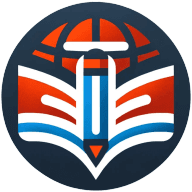7 Differentiated Instruction to Meet Diverse Learning Needs
Differentiated instruction is revolutionizing the way chemistry is taught in classrooms across the globe. By tailoring lessons to diverse learning styles and offering flexible learning paths, educators are unlocking the potential of every student. Drawing on insights from leading experts in the field, this article explores seven key strategies to personalize chemistry education and boost student engagement and success.
- Tailor Chemistry Lessons to Learning Styles
- Offer Flexible Learning Paths for Success
- Craft Personalized Learning Plans
- Engage Students with Diverse Teaching Methods
- Adapt Curriculum to Match Student Abilities
- Implement Flexible Grouping for Targeted Instruction
- Leverage Technology for Individualized Learning
Tailor Chemistry Lessons to Learning Styles
Differentiation is the heart of meaningful learning. I once worked with two IB Chemistry HL students studying acid-base equilibria, but with entirely different learning needs.
One of them was highly visual and intuitive. She loved patterns, analogies, and color, but often froze when equations appeared. The other was logical, numbers-driven, and thrived on data and speed. Both needed to understand the same concepts, but not in the same way.
As an online tutor who works with students across over 10 countries and curricula like IB, AP, GCSE, and A-Level, I've learned that effective teaching starts with understanding how each student learns best.
For the visual learner, I used animations to show pH changes, drew color-coded titration curves, and explained buffers as "emotional shock absorbers." I gave an analogy of the buffer to a sponge that soaks up excess emotion, just like how a buffer solution can absorb excess acid or base without significant changes in pH. We replaced jargon with analogies, and she began asking more profound questions, no longer shying away from chemistry.
For the quantitative learner, I focused on high-level calculations, Ka and pH problems, and fast-paced past paper practice. He was most engaged when challenged to explain real-life scenarios through equations, so we leaned into that.
In both cases, I didn't change what I was teaching, just how I delivered it. That's what differentiation means to me: meeting the learner where they are, and building up from there.
Whether breaking down complexity with visuals, ramping up the challenge with numbers, slowing the pace, or using analogies, my approach is always flexible, human, and student-first.
The result? Both students scored top grades and walked away with a deep understanding of the subject that made sense to them. Their success is a testament to the power of differentiation in teaching.
Because when learners feel understood, they start to believe they can succeed—and that's where the magic happens!

Offer Flexible Learning Paths for Success
At Legacy, we've seen time and time again that a one-size-fits-all approach doesn't work, especially for students coming from diverse learning backgrounds. That's why we've developed three distinct learning paths: group live classes for structure and community, self-paced courses for independence, and one-on-one tutoring when a student needs deeper support.
I recall a student who was excelling in science but struggling in English. For him, we replaced the standard essay assignments with narrative scripts he could incorporate into his coding projects—same learning goals, but with a completely different entry point. That's when it clicked for him.
The real strategy is flexibility. We allow students to progress through content in a way that matches their pace, interests, and bandwidth. Sometimes it's about support, sometimes it's about freedom, and most of the time, it's both. When you provide students with options and treat learning as a collaboration, they stop simply checking boxes and start actively engaging.

Craft Personalized Learning Plans
Differentiated instruction tailors learning strategies to each student's unique needs. By recognizing individual strengths and weaknesses, educators can create personalized learning plans. These plans help students reach their full potential by focusing on areas where they need the most support.
Customized approaches, such as one-on-one tutoring or small group work, can significantly boost student performance. Teachers should regularly assess and adjust these strategies to ensure ongoing student success. Take the first step towards personalized learning by identifying your students' individual needs and crafting tailored strategies today.
Engage Students with Diverse Teaching Methods
Adapting teaching methods to various learning styles is crucial for inclusive education. Visual learners may benefit from diagrams and charts, while auditory learners might prefer discussions and lectures. Kinesthetic learners often excel with hands-on activities and experiments.
By incorporating a mix of these approaches, teachers can engage a wider range of students effectively. This diversity in teaching methods helps ensure that all students have the opportunity to learn in ways that suit them best. Start exploring different teaching methods to cater to various learning styles in your classroom tomorrow.
Adapt Curriculum to Match Student Abilities
Modifying curriculum to address diverse student needs is essential for creating an inclusive learning environment. This approach involves adjusting content, pacing, and complexity to match students' abilities and backgrounds. For example, advanced students might receive more challenging assignments, while those struggling may get extra support or simplified tasks.
Cultural relevance should also be considered when adapting materials to make learning more meaningful for all students. By tailoring the curriculum, educators can help every student access and engage with the subject matter effectively. Begin the process of curriculum modification by reviewing your current materials and identifying areas for improvement.
Implement Flexible Grouping for Targeted Instruction
Flexible grouping is a powerful tool for targeted instruction in diverse classrooms. This method involves regularly reorganizing students based on their current needs, skills, or interests. It allows teachers to provide more focused attention to specific groups while others work independently or collaboratively.
Flexible groups can change daily or weekly, preventing the stigma of fixed ability grouping. This approach promotes peer learning and helps students develop a range of social and academic skills. Implement flexible grouping in your next lesson plan to provide more targeted and effective instruction.
Leverage Technology for Individualized Learning
Technology offers numerous opportunities to support individualized learning paths in diverse classrooms. Digital platforms can provide adaptive exercises that adjust to each student's pace and level. Online resources allow students to explore topics in depth according to their interests.
Virtual reality and simulations can make abstract concepts more tangible for visual and kinesthetic learners. Additionally, technology enables teachers to track student progress more efficiently, allowing for timely interventions. Explore educational technology options and integrate one new tool into your teaching practice this week to enhance individualized learning.

